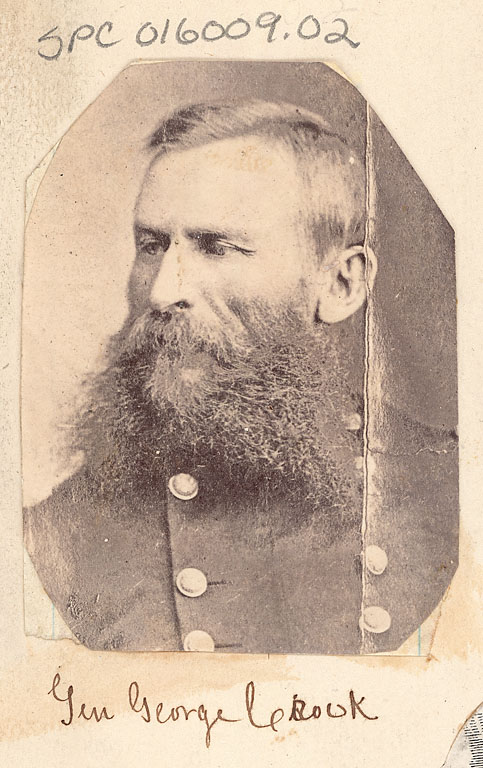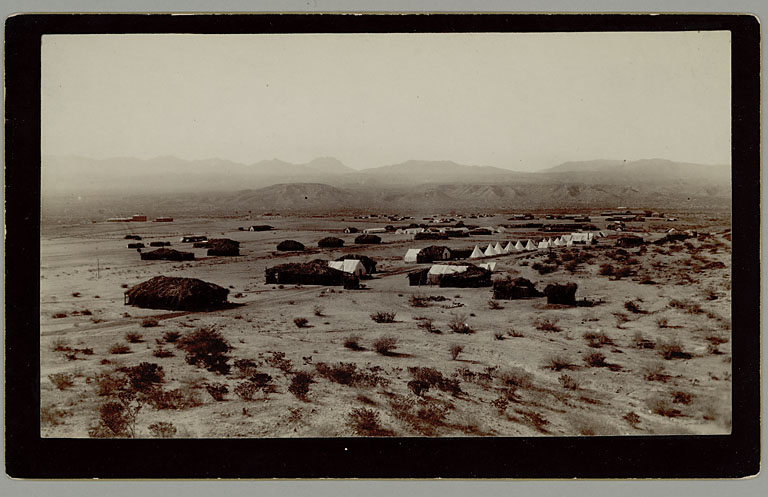YAVAPAI
The Yavapai were a primarily foraging people who lived in central and west-central Arizona. Prior to being confined on reservations the Yavapai roamed over a large territory that spanned more than 10 million acres. Their culture reflects their Yuman origins but also is heavily influenced by that of the Apache who lived to their east.

Yavapai territory
Source - http://www.shutterstock.com/pic.mhtml?id=65806960&src=id
Settlement and Subsistence Patterns
The settlement and subsistence pattern of the Yavapai was similar to that of their Hualapai neighbors. Small extended family groupings followed seasonal rounds that cycled through different elevational zones, to take advantage of the different seasons of food availability. Agave and pinion nuts were staples of their diet, and some groups practiced limited horticulture by planting in washes or near springs and returning intermittently between their hunting and gathering trips to check on the crops. The period of greatest abundance was fall, when the nuts, berries and seeds of the uplands were ripening. To ensure that they would have enough to eat during the barren winter season, foods would be dried and cached in caves during the other seasons.
Social Organization and Lifeways
Like other Yuman groups, the basic Yavapai social unit was the extended family. These small kin groups travelled together on their seasonal rounds, only aggregating into their larger band settlements during the winter. Winter camps were usually set up in caves, though in areas where there weren't caves dome structures like those used by the Pai were constructed. The Yavapai had four subtribes.
Yavapai culture was heavily influenced by the Apache. Their origin myth contains both Yuman and Apache elements and ceremonies from both cultures were practiced. As did other Yuman groups, they performed the Bird Dance (watch video), a ceremony in which girls impersonate birds and song cycles relate stories about nature. They also held girl puberty ceremonies and Mountain Spirit Dances (or Crown Dances) borrowed from the Apache. (These ceremonies will be discussed further in the Apache module).
History
Like that of the other tribes, the Yavapai hunting and gathering lifestyle came to an end in the 1850s. As the influx of settlers limited their ability to follow their traditional seasonal rounds, the Yavapai increasingly turned to raiding Anglo settlements for food. This resulted in a ten-year long war between the Yavapai and the U.S. Calgary known as the Yavapai Wars. In 1871, General George Crook was put in charge of the Arizona territory and tasked with moving all "roving" Indians to reservations. On December 21, 1871, Crook issued an edict that all Indians not on the reservation by February 15, 1872 would be treated as hostile. It is unclear if the Yavapai- who were hiding in small groups across their territory- ever received this message.
Portrait of U.S. General George Crook.

Source - http://sirismm.si.edu/naa/4605/01600902.jpg
The following winter General Crook initiated a program of systematically destroying the stored food caches of the Yavapai. Without these food stores the Yavapai were quickly reduced to the verge of starvation. In December of 1872, his army located a cave containing a band of Yavapai and opened fire, killing 76 of the 110 Yavapai men, women and children living there. This event is known as the Skeleton Cave Massacre, and is still remembered by the Yavapai as the most horrendous event of the war.
Without their winter supplies and facing certain starvation, the remaining Yavapai soon surrendered and by spring of 1873 most were on a reservation in the Verde Valley. Despite an epidemic that killed about one-third of their people, they managed to excavate an irrigation ditch and produce a successful harvest that year. Concerned by the growing self-sufficiency of the Yavapai Indians, a group of Tucson contractors (who sold food rations for use on the reservations) pressed to have them relocated to the Apache Reservation at San Carlos. The next winter the Yavapai were forced to walk 180 miles over rugged terrain to reach the San Carlos reservation; although 1500 Yavapai began the journey, only 200 remained alive when they returned more than a decade later.
Although the Yavapai and the Apache were traditional allies, the Yavapai were the minority at San Carlos and wanted their own reservation. Between 1903 and 1905 this request was honored, and the Fort McDowell, Yavapai-Apache, and Camp Verde reservations were established. Each of these reservations has developed separately and today house separate tribes with separate governments.
San Carlos Indian Reservation.

Source - http://sirismm.si.edu/naa/24/apache/02008300.jpg
Click on next page to continue.
